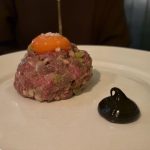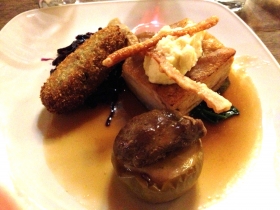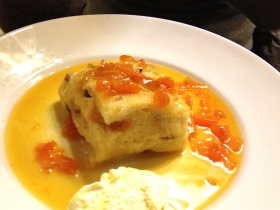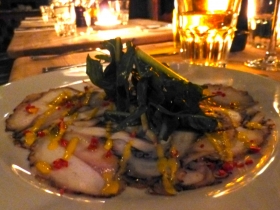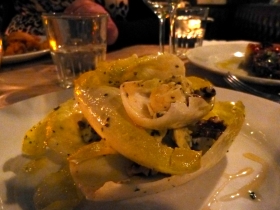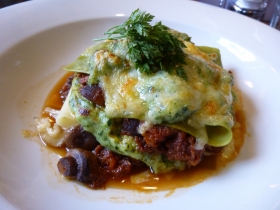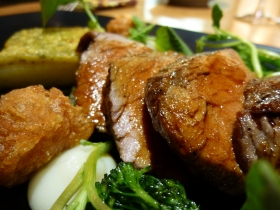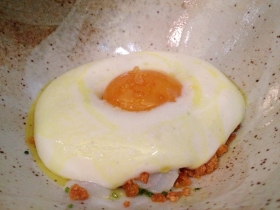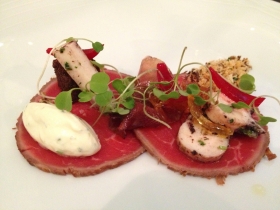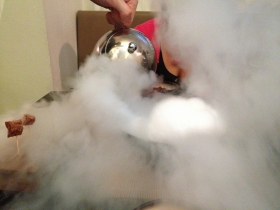The Dysart Arms is part of the Brunning & Price chain of pubs, one of those groups that has worked out the gastropub formula and is busily replicating it in 30+ places across the country. Normally I’d pick an independent instead, but Harden’s gave it a thumbs up and we were winding our way home after a long day so picking somewhere with some confidence of success seemed good.
Of course, and feel free to call me a snob, if I’d known that Brunning & Price were owned by The Restaurant Group, who also run Frankie & Benny’s, Chiquitos and Garfunkels, I might have been more tempted to pick a local indie. Hey-ho, we learn as we go. At least I can say that I ate and reviewed before finding out.
The ambiance is one thing they’ve got right, a handful of linked rooms kept cosy and characterful with plenty of original looking features and a grand library giving the main dining room style. This is not the identikit decor of a Garfunkels. The service is friendly, generally good. The menu had me worried even before ordering: sixteen mains? That’s not usually a good sign.
My starter, a pigeon breast salad, was well done. The pigeon was raw cured and ate beautifully. The stickily dressed salad added good flavours of chestnut and cranberry. Maureen’s “crab bon-bons” were dense and the crab uncrabby, with a zingy Thai-style sauce from the bottle-of-sweet-chilli-sauce school of UK Thai cooking.
My pork main was a big plate of pig. The belly was okay, a big confit slab with too much unrendered fat left. Pig cheek was a good texture but under-seasoned, and the “black pudding croquette” was soggy sage stuffing in breadcrumbs with the odd crumb of black pudding to show willing. Maureen’s salt-and-pepper squid salad was four big rubber rings coated in a powerful spicy pepper, tossed into a mixed salad with some bits of grapefruit. It was definitely ho-hum.
Gastropub puds ought to have fixed things, but their sticky toffee pudding was unloving with not enough sauce and the bread-and-butter pudding had absolutely no colour on top, it was just a hefty lump with a sticky apricot sauce that looked like… well, I’ll leave it to the photo.
None of our meal at The Dysart was inedible, but none of it was very good either (pigeon excepted). I’ve had better specimens of every other dish within the last six months. There’s a place for chain pubs, I’ve got no problem with Wetherspoons and co. turning out microwaved Brake Bros grub for those who only have a tenner to spend on a meal out. But if Brunning & Price want to charge the same as good independent gastropubs (£24 three courses without drinks) for what is generally very dull fodder, then I’ve got no time for them.



